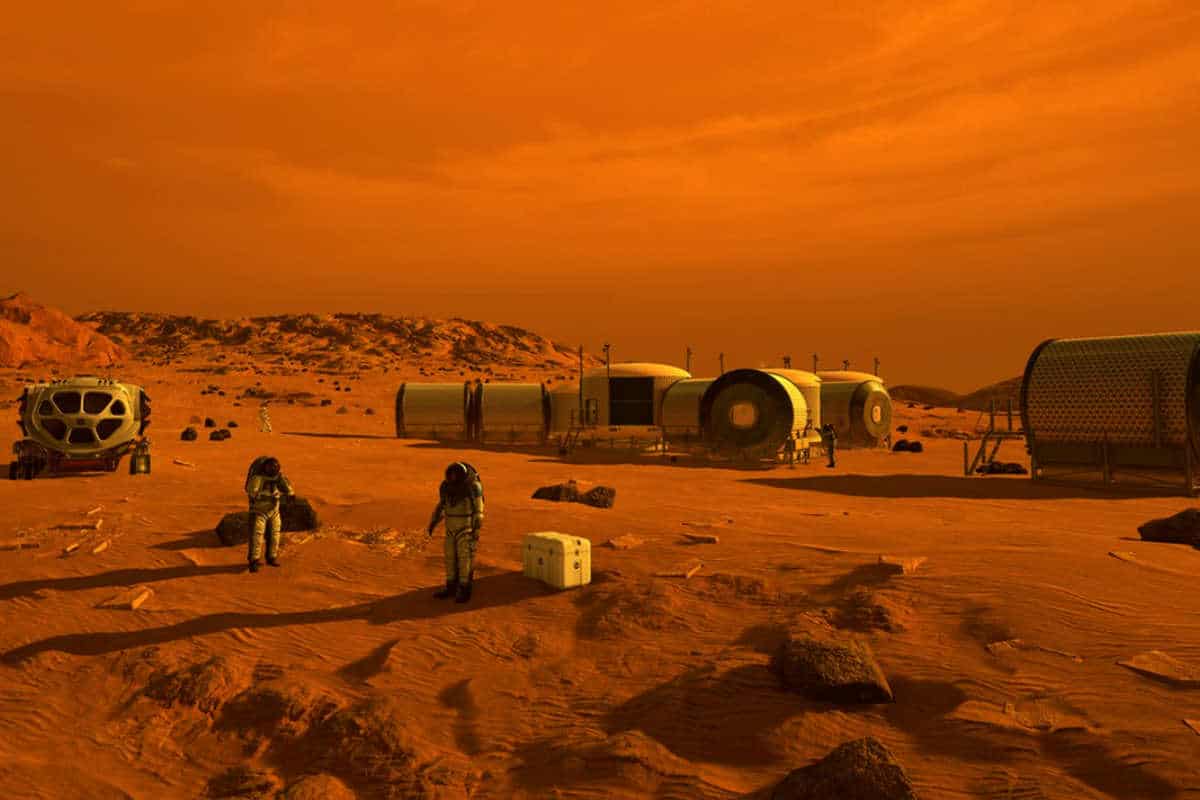
The once bizarre idea that we might one day colonize the red planet is now taking shape.
Humans have long wanted to go to Mars. The idea of actually being able to inhabit the inhospitable and exotic planet stimulates the imagination. Still, it didn’t seem very realistic. But that is slowly but surely changing. Especially now that researchers have devised an ingenious method to manufacture rocket fuel on the spot.
Resources on Mars
As you can imagine, a lot is involved if we actually want to inhabit our dusty neighbor planet. Not only do we need oxygen, water and food to keep ourselves alive, rocket fuel is also on the shopping list. Because how else do you get from the red planet back to Earth? Currently, methane and liquid oxygen (LOX) are being considered. But neither of these occur naturally on Mars, meaning we should bring this from Earth. That transport is quite pricey; transporting the required 30 tons of methane and LOX is estimated to cost about $8 billion. To reduce these costs somewhat, NASA has proposed using chemical catalysis to convert carbon dioxide to LOX on Mars. And while that in itself seems like a great solution, in this case the necessary methane would still have to be shipped from Earth to Mars.
Solution
However, researchers have now devised a better solution for obtaining both LOX and methane. For example, they want to ingeniously manufacture both substances from CO2; a gas that is already abundantly present on Mars. A smart plan, which could significantly reduce mission costs. “Carbon dioxide is one of the few resources available on Mars,” said researcher Nick Kruyer. “Knowing that biology is particularly good at converting CO2 into useful products makes it very suitable for making rocket fuel.”
How does it work?
On the ingredients list we actually only find three things, all of which can already be found on the red planet and therefore do not need to be carried in the suitcase: carbon dioxide, sunlight and frozen water. In addition, two microbes must be transported to Mars. The first concerns cyanobacteria (blue-green algae) that extract CO2 from the atmosphere of Mars and use sunlight to make sugars. The second is an engineered E.coli bacterium, which converts the sugars produced by the blue-green algae into a Mars-specific propellant. And then the rockets can be propelled with it.

Reactors the size of four football fields, covered with cyanobacteria, could produce rocket fuel on Mars. Image: BOKO mobile study
A nice side effect: during the process about 44 tons of excess clean oxygen is released. And that comes in handy, of course. This can be used for countless other purposes, such as supporting a real human colony.
Gravity
It means the researchers have invented a clever way to make rocket fuel that allows a return trip to Earth. This is partly due to the gravity on Mars, which is only a third of the gravitational pull on Earth. This means that the researchers could be creative in coming up with possible fuels. “You need much less energy to take off on Mars,” explains researcher Pamela Peralta-Yahya. “This gave us the flexibility to consider different chemicals that don’t work in rocket launches on Earth.”
Challenges
Although it seems like a brilliant solution, there are still some challenges to overcome. For example, the entire process is quite heavy and the research team is now looking for ways to make the process lightweight. “In addition, experiments need to be conducted to demonstrate that blue-green algae can indeed be grown in Martian conditions,” said study researcher Matthew Realff. “For example, we have to take into account the difference in sunshine, both because of the distance from the sun and because of the lack of atmospheric filtering of the sunlight. High ultraviolet radiation can damage the blue-green algae.”
All in all, there is still plenty to do. But still this study an important step towards a habitable red planet. It means that plans to colonize Mars are starting to take shape. So it is no longer a question of if, but when we will go.
Source material:
“Making Martian Rocket BioFuel on Mars” – Georgia Institute of Technology
Image at the top of this article: NASA